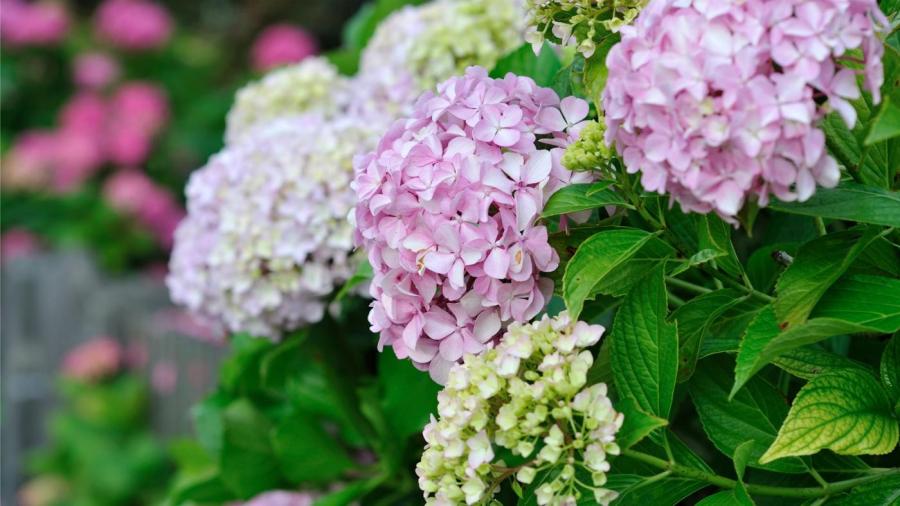How Do You Care for Hydrangeas?

Once established in the garden, hydrangeas only need fertilizer once or twice per year, a layer of mulch to hold in moisture and water in the summer months, if rainfall is less than 1 inch per week. Hydrangeas come in numerous varieties, but most bloom on new growth, so prune old wood in the late summer or early fall to keep the plant looking its best.
Hydrangeas thrive in rich, moist, well-drained soil. Light preferences depend on the variety, but, in general, hydrangeas prefer full sun with some afternoon shade. The best time to plant hydrangeas is after the last frost in the spring or in the fall. In the first couple of years, water hydrangeas frequently to help the plant develop strong roots. For some varieties, the pH level of the soil affects the color of the flowers: more acidic soil yields blue flowers and more alkaline soil results in pink flowers. Add lime to make the soil more alkaline, or add acid-based fertilizers or acid-rich organic material, such as coffee grounds or egg shells, to make the flowers blue. Hydrangeas are deciduous shrubs or vines that are resistant to both pests and diseases. The most common variety is the bigleaf hydrangea, which has large leaves and showy flowers in big, rounded clusters.





